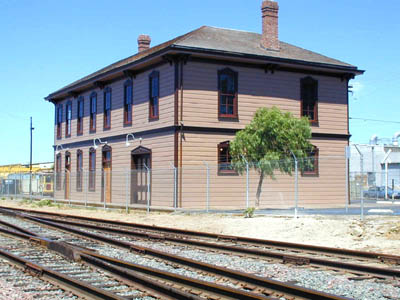Installing interior lighting, LED's this time, and in their prototypically correct locations of all places.
The
September 1908 edition of the Electric Traction Weeklys article on the new
Niles Cars for San Diego (graciously forwarded to me by Bill Bolton) included an interior shot of these cars. Looking at this photo, I was able to ascertain the locations of the lights in the car (despite the fact that all of the lights weren't shown). Which got me to thinkin' (which could be dangerous) what would it take to light the car prototypically? Would the car look any different/better if it was lit prototypically? Would it be worth the time and effort to light the car prototypically? And why doesn't my spell check like the word "
prototypically"? Well, there is only one way to find out. And that is to light the car prototypically (spellcheck be damned!).

This photo was shot in the enclosed section of the California style Niles Cars, probably standing in the doorway of one of the two bulkheads looking towards the second bulkhead. Visible are three lights (or 6 if were counting bulbs). The car is symmetrical so its safe to assume the forth light is just out of frame above.
The lights are evenly spaced so, if I continue the spacing into the open end sections of the car, we have a total of 8 interior lights. Seems reasonable enough. As long as the decoder can handle lighting that many lights. Since the lights would be lit more on the dim side, it should.
I've seen traction models with their lights mounted on a strip of circuit board. That seems like a really good idea to me, so that's the route I'm going to take. But because the Niles cars have those bulkheads inside, I'm going to have to split the circuit board into two sections. The bulkheads don't reach all the way into the deck (or clerestory) section, so the circuit boards are able to slip over the top of the bulkheads. But the bulkheads definitely limit the length of the circuit boards.
LED's are the way to go. They require less voltage, they don't burn as hot, and last a lot longer, than incandescent bulbs do. But as you can imagine, jamming 8
Christmas LED's into these cars would be ridiculous. So instead, I'm opting for the tiny SMD (Surface Mount Diodes)LEDs (warm white). John McWhirter recommended purchasing the SMD LED's from
TrainAidsA. They specialize in electronics for model railroading. I have found them to be very helpful.
The circuit board is cut to size. Then holes are drilled for the LED lights and also where the base of the trolley poles pass through the roof. The holes for the lights are filed square to match the size of the LED's. Then the copper clad is notched with a saw to separate the positive and negative sides of each LED. The opposite side the circuit board is notched length wise to act as a bus for the headlights (see photo below).
Here are the circuit boards with the LEDs installed. This is actually my second attempt, I had the polarity of the LEDs reversed last time! The round holes are for the trolley pole base to pass through, so these boards have a front end and a back end. The pole holes denote the front end of the circuit board. The white wires are soldered towards the front end, the black wires towards the back end. The back ends of the circuits boards will butt against each other in the center of the car:
This test fit revealed the circuit boards fit quite snug between the ceiling and the bulkheads. I don't think any adhesive will be needed to keep them in place.
Next, I have to determine how bright the lights should be. This will determine the size of resistors required. Then we'll have this car illuminating quite nicely. Yes sir! Illuminating quite nicely!
Dandy
 Okay, so here is where we left off...
Okay, so here is where we left off... This shows the top and bottom of one of the two circuit boards (as it sits in the car). On the top, the copper cladding has been cut vertically to electrically isolate the LEDs so that they can be wired in series. On the bottom, the copper cladding has been cut horizontally. The top strip will be the bus for the blue wire, the bottom strip will be the bus for either the white or yellow headlights wire. The vertical cut provides a soldering pad for either the purple or green wire.
This shows the top and bottom of one of the two circuit boards (as it sits in the car). On the top, the copper cladding has been cut vertically to electrically isolate the LEDs so that they can be wired in series. On the bottom, the copper cladding has been cut horizontally. The top strip will be the bus for the blue wire, the bottom strip will be the bus for either the white or yellow headlights wire. The vertical cut provides a soldering pad for either the purple or green wire.












